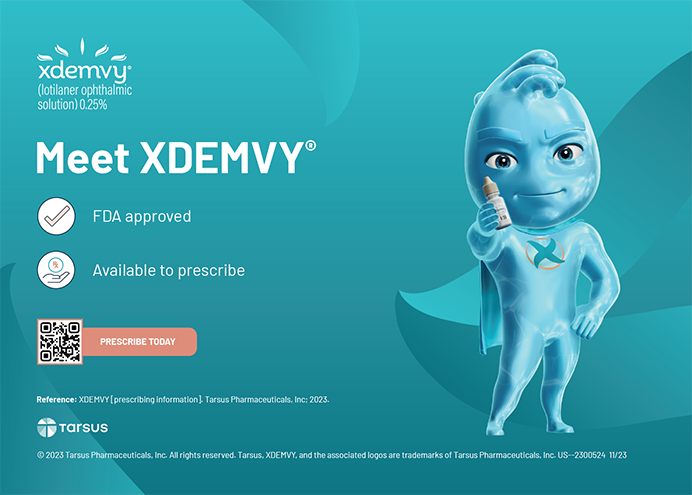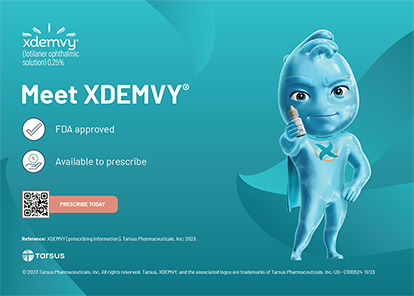
For refractive surgeons, an expanding toolbox of interventions and our willingness to embrace such technologies come with the burden of setting and exceeding patients’ expectations. I have found that most patients undergoing elective refractive surgery are reasonable, but I always have that one who keeps me up at night, generally not because of a complication but because of my desire to satisfy him or her.
AT A GLANCE
- In Dr. Yeu’s experience, patients undergoing elective refractive surgery are usually dissatisfied for one of three reasons: a poor quality of vision, a missed refractive target, or an unmet expectation.
- How a surgeon communicates with the patient pre- and postoperatively is a major factor in preventing and managing dissatisfaction.
- How a surgeon handles a problem postoperatively reveals a lot about the sort of doctor he or she is.
In my experience, patients are usually dissatisfied for one of three reasons:
1. A poor quality of vision for whatever reason
2. A missed refractive target
3. An unmet expectation (eg, a limited range of vision with a monofocal IOL or unsatisfactory reading vision with a presbyopia-correcting IOL)
A lot of the postoperative care of my routine patients ends up with one of my anterior segment service optometrists within the practice or with a collaborative comanaging OD in the community. Thus, communication at the preoperative appointment(s) and upon patients’ return for higher-level care with me is a sensitive matter.
PREOPERATIVE COMMUNICATION
No. 1. Listen
The saying an ounce of prevention is worth a pound of cure could not ring truer than it does in refractive surgery, which blends insurance- and cash-based services. We must listen to patients to understand their needs and customize treatment. How tall are they? What is their profession, and what are their hobbies? Do they have coexisting medical conditions? What are their visual goals and needs? I combine this knowledge with the objective clinical picture and examination. The last and most important part is confidently making a recommendation.
No. 2. Keep It Simple
My refractive and cataract counselors effectively prepare background information for patients before I meet them. I then keep the conversation relatively simple.
No. 3. Allot the Time, and Be Specific
It is important to schedule enough time to discuss surgery at each evaluation appointment. Because I review my own postoperative data, I can share highly specific information on what a given patient’s chances are of an expected outcome. For example, I will explain to a cataract patient who is status post LASIK and who desires greater spectacle independence that the likelihood of having that quality of uncorrected distance visual acuity right after surgery is 85%, because the corneas have been altered. I will emphasize that touchups or even a second time in the OR may be required to reach an accurate outcome.
POSTOPERATIVE STRATEGIES
No. 1. Investigate
An investigative workup is key to handling dissatisfied patients. Objectively, these individuals need a careful refraction, macular imaging, and repeated corneal diagnostics like topography so that I can identify a missed refractive outcome and why it might have occurred. I also look closely at postoperative medications for any potential causes of toxic keratitis and evaluate these patients for dry eye disease.
No. 2. Listen
Just as it was preoperatively, the most important component of postoperative management is listening to patients’ concerns about their vision and their quality of vision. If a trial spectacle or trial contact lens provides them with satisfactory vision, it will also give them peace of mind, because they can experience the improvement that an appropriately timed enhancement will produce. More difficult can be situations where persistent and/or exacerbated dry eye disease is responsible for the patient’s concerns or where the technology itself is likely the main cause of suboptimal quality of vision.
No. 3. Slow Down
When performing consecutive eye surgeries such as cataract procedures, I will not operate on the second eye until I know that the patient is satisfied with the outcome in the first eye. I have yet to see a marginally satisfied patient become exceedingly happy as a result of neuroadaptation. Thus, if a patient is miserable with the quality of 20/20 vision, adding a second IOL of the same technology is likely the wrong answer. This is the time to slow down, optimize all components related to the ocular surface, and create a plan with the patient that may ultimately involve an IOL exchange (see Watch It Now).
No. 4. Address Cost
An unmet visual expectation or protracted postoperative course can sometimes be the reason for a patient’s dissatisfaction. They pay a premium, and that cost can be their main gripe. I know this is a sensitive and polarizing topic among physicians, but I have always slept better after refunding at least a portion of a dissatisfied patient’s investment when I feel the need. I preface such refunds by stating that his or her range of vision is more limited than what we strived to achieve, owing to technological limitations and despite our great collaborative efforts and the time devoted to neural adaptation or training. I emphasize that the return of part of the patient’s financial investment is not an admission of fault but a gesture of goodwill.
Fortunately, partial refunds are uncommon in my practice, because the quality of available technologies is so much better today than even 5 years ago.
WATCH IT NOW
Elizabeth Yeu, MD, and Mark Kontos, MD, explore the challenges associated with IOL exchanges.
CONCLUSION
I feel strongly that how I manage a problem or a refractive surprise reveals much more about what kind of doctor I am than how I breeze through cases with routine, happy outcomes. Although dealing with dissatisfied patients is emotionally taxing and time consuming, the finesse involved is one of the most important skills for us to refine as refractive surgeons.




